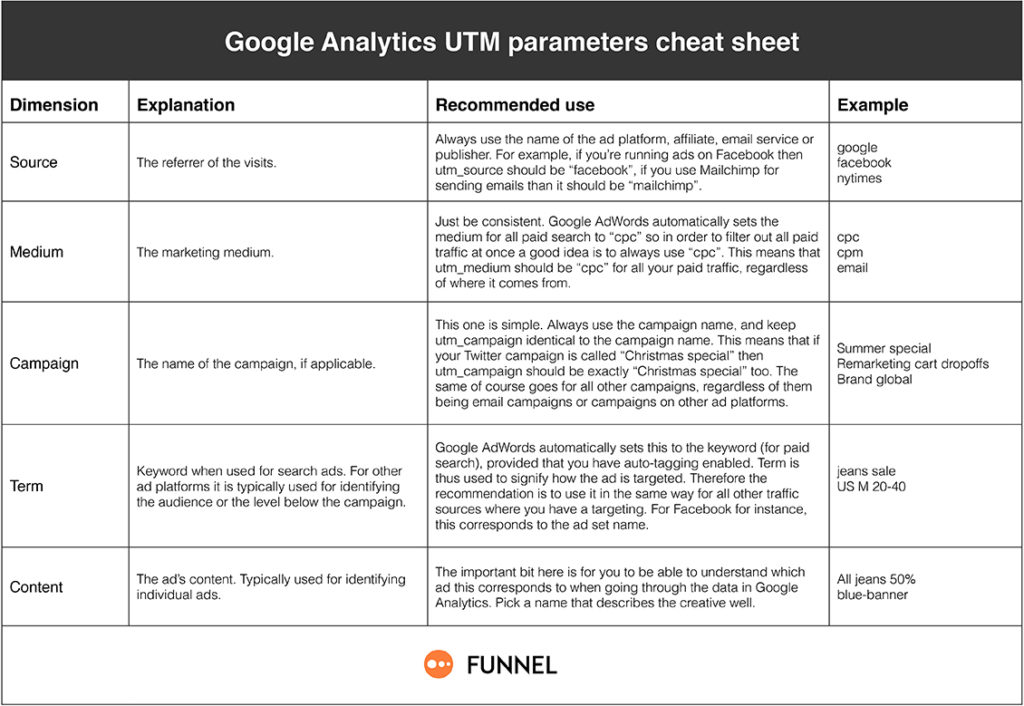As an optimizer who regularly looks at Google Analytics to learn more about how users interact with the client’s website, UTM is a great way to get more specific insight into where traffic is coming from.
Perhaps you know how much traffic you get from your Facebook organic posts but you don’t actually know what percentage of visits comes from your coupon or promo campaigns. By using custom campaigns, you can further analyze and understand your traffic.
To help you make the most of UTM tagging, read on this quick guide.
What is UTM Tagging?
UTM tags (Urchin Tracking Modules) are special codes that are added at the end of URLS to provide better detail on where traffic comes from – individual campaigns, keyword performance, landing pages etc.
UTM tags provide insight into which channels are working best for you. They also help you measure the impact of specific campaigns that run external to your website.
How Does It Work?
It works by overriding the source information in Google Analytics with the terms you want to use.
https://spiralytics.com.ph/blog/?utm_source=facebook&utm_medium=cpc&utm_content=UTM-Guide&utm_campaign=Blog-Content-GA-2015
*Original Link = https://spiralytics.com.ph/blog/
*Source = Facebook
*Medium = CPC
*Content = UTM Guide
*Campaign = Blog Content GA 2015
When done correctly, UTM tagging can help in getting you a very comprehensive picture of your customer’s journey.
UTM Best Practices
Case Sensitive
Keep your variables on uppercase/lowercase consistently so your data are organized efficiently. For example, say you have two different Facebook campaigns; “summer travel deals” and “summer gadget deals”, but you’ve listed “Email” as one source and “email” for another. This will result in two separate sets of email data, when they should just be grouped as one.

This is an example of an unorganized tagging due to inconsistencies in uppercase/lowercase usage
Keep Your Tags Consistent
Don’t mess up your data by not using a consistent naming convention. Say for example, if one of your campaign tags is “2015 summer collection”, there’s no point naming another, “collection for summer 2015.” Instead, try “2015 summer collection” and “2015 winter collection” – the cleaner your data looks, the easier it is to view and analyze it.
Use Dashes and Never Use Spaces
Google doesn’t algorithmically penalize for dashes in the URL (plus it looks cleaner). Actual spaces in URL aren’t allowed. Now if you accidentally separated your words by spaces, it will look like this (doesn’t look nice):
https://spiralytics.com.ph/blog/?utm_source=facebook&utm_medium=cpc&utm_content=UTM%20Guide&utm_campaign=Blog%20Content%20GA%202015
Use URL shortener
Customize your URL tags through a URL shortener. Long URLs look spammy and not trustworthy. We like using bitly.com or you can try tinyurl.com.
Establish Your UTM Parameters
You have five parameters to consider when building a UTM tag but we normally use just these 4 variables:
-
utm_campaign source
-
utm_campaign medium
-
utm_campaign content
-
utm_campaign name
“Content” is a great way to differentiate ads. The most important thing to do is develop a standard method of using the essentials and sticking to it. This decision should be based on how you want to be able to group your data.
Campaign Names Should be the Same in Your utm_campaign Variables
For example, if you put “Voucher-Sale-May-2015” as a campaign name in your Facebook dashboard, it should be the same variables entered to your URL builder. This will be handy in using your “vlookup” in exporting reports.

Source (Funnel.io)
What To Tag
Tag all inbound/digital marketing: links inside your newsletters, all non-AdWords paid links (Facebook/Twitter etc) and paid social campaigns (Facebook boost posts etc).
On a side note, we don’t recommend these in using UTM tagging:
-
Google AdWords campaigns (as long as you have enabled auto-tagging)
-
Links that come from referral sites
-
Organic Search
Wrapping Up
Using UTM tags can definitely help you segregate the tractions from your paid advertising efforts from your organic posts. It helps you measure what campaigns/posts drive traffic, engagement and sales through the use of Google Analytics.
How do you plan on using them in the future? Let us know in the comment box. Happy tagging!





